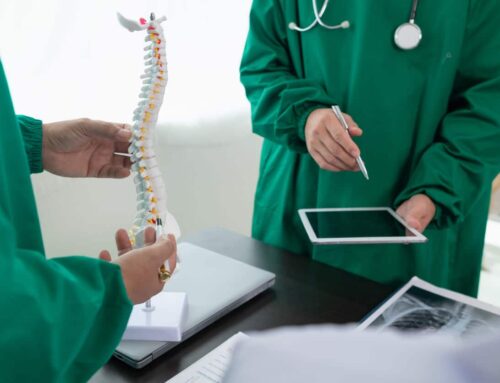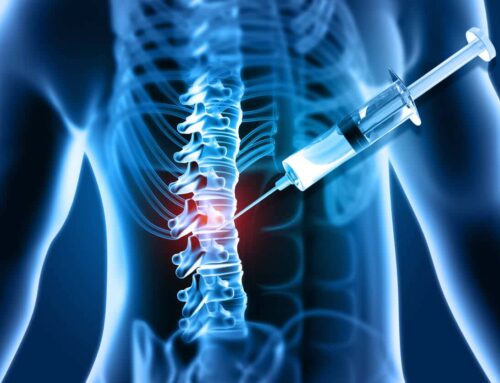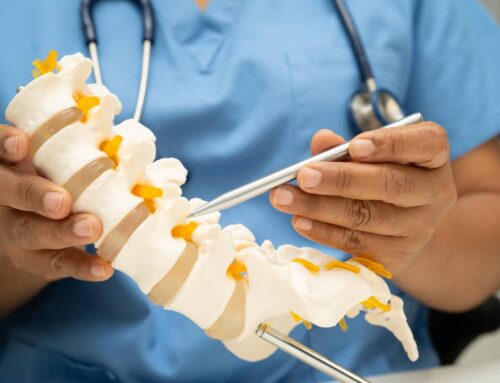Herniated discs, also known as ruptured, bulging or protruding discs, are relatively common. As many as two percent of people in the United States experience one every year, and the condition can cause sciatica and back pain. Surgery is not always necessary to fix a herniated disc, but it can help speed up the healing process. If that’s the route you’re considering, you’re going to want to know everything there is to know about the procedure. In this case, that’s a discectomy.
What is a discectomy?
A discectomy is a surgical procedure used to fix a lumbar (lower back) herniated disc by removing the material pressing against your spinal cord or nerves. There are several different types:
- An open discectomy, in which an incision larger than half an inch is made.
- A microdiscectomy, in which a special microscope is used, allows your surgeon to reduce the possibility of tissue damage by spreading muscles and ligaments rather than cutting through them.
- An endoscopic discectomy, which makes use of a tiny camera and is the least invasive option.
- A percutaneous discectomy, in which your surgeon will use a needle to reach the disc rather than making an incision.
How your surgeon accesses the affected area of your spine may vary, but the process is similar.
Who is a candidate for a discectomy?
The prospect of surgery can be frightening, but it can drastically improve your quality of life. Surgery might be considered if you have a herniated disc and:
- The pain, weakness or numbness is to the point that it interferes significantly with your daily activities.
- Non-surgical treatment hasn’t had a noticeable impact on your pain within six weeks.
- You’re experiencing weakness or loss of motion that surgery might be able to fix.
If you develop cauda equina syndrome, an emergency discectomy may be performed.
What to expect during the procedure
The prospect of any surgical procedure can be anxiety-provoking. Knowing what to expect, however, can help reduce that stress.
Before your surgery, you’ll receive strict instructions for when to stop eating and drinking. Following these guidelines is essential to help keep you safe during the procedure. If you don’t, your operation is likely to be canceled.
When you arrive at the hospital, the area where the procedure is to be performed will be marked with a pen or marker.
In most cases, you’ll be placed under general anesthesia, so you’ll be asleep during the surgery. Depending on the type of discectomy you’re receiving, it may take anywhere from half an hour to several hours.
Coming out of anesthesia can be disorienting, and you may be in some pain afterward. You’ll typically receive prescription-strength painkillers to help manage the pain. Then, depending on the recommendation of your doctor, you’ll either be allowed to go home or spend the night in the hospital for observation.
From there, you get to start the recovery process. Some stiffness and soreness are to be expected, but in general, you can expect to begin feeling better soon.
If you’re in pain and non-surgical options aren’t working, a discectomy might be the best option for you. However, as with any surgical procedure, there is a risk of infection and complications from the anesthesia.
Discectomy recovery
Even with minimally invasive options available, the recovery process for a discectomy tends to take several weeks.
Right after the surgery, you’ll be encouraged to get out of bed and walk. Doing so gets your blood flowing, which reduces the potential for blood clots, infections and other complications.
Sitting for long periods might be uncomfortable after the surgery, although that will fade with time. Getting up to walk can help reduce the amount of scar tissue you develop, so avoiding sitting for too long is recommended.
In general, you’ll be able to resume most of your daily activities soon after the procedure. If you have a desk job, you’ll likely want to wait between two and four weeks before returning to work, while people who do manual labor will typically wait between four and eight weeks.
You might attend physical therapy or receive instructions to do exercises at home. Always follow the instructions the medical professionals you’re working with give you. Doing so will result in the best post-surgical results.
SPINE SPECIFIC PHYSICAL THERAPY
Discectomy surgery in Raleigh, Cary and The Triangle
For more information about your health and potential treatments, check out the rest of the posts on our blog.






